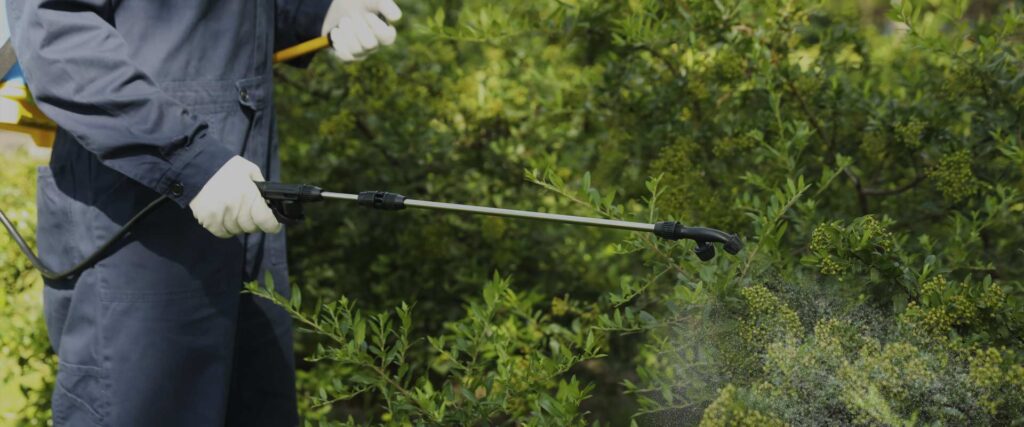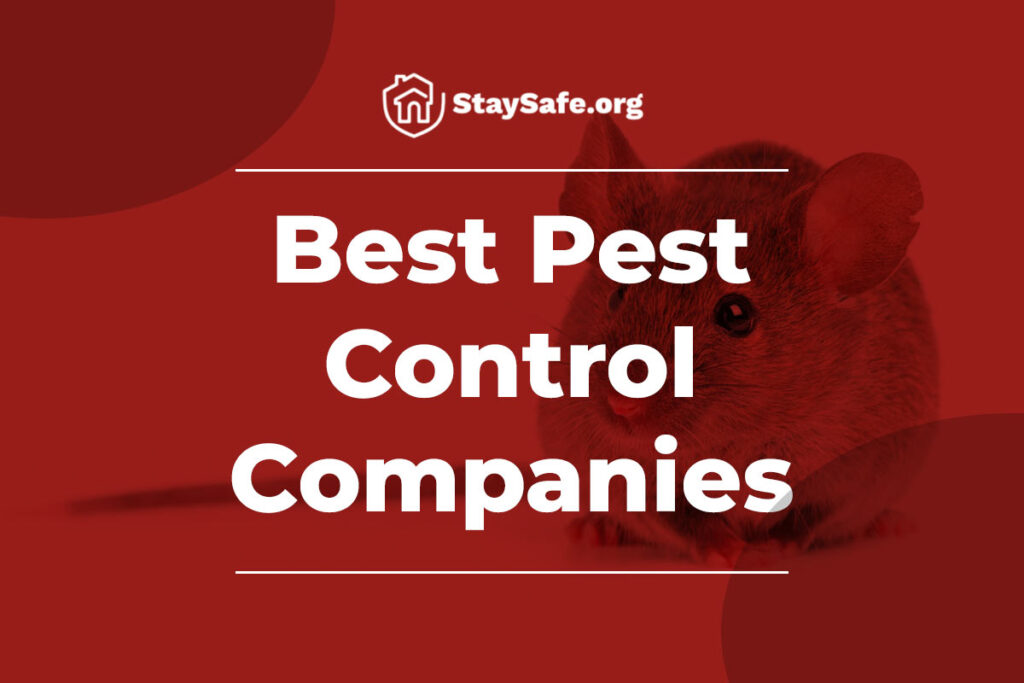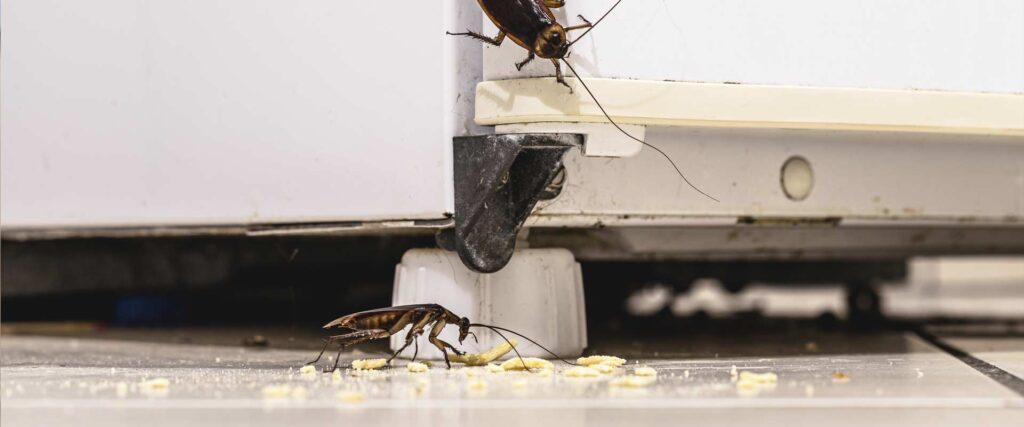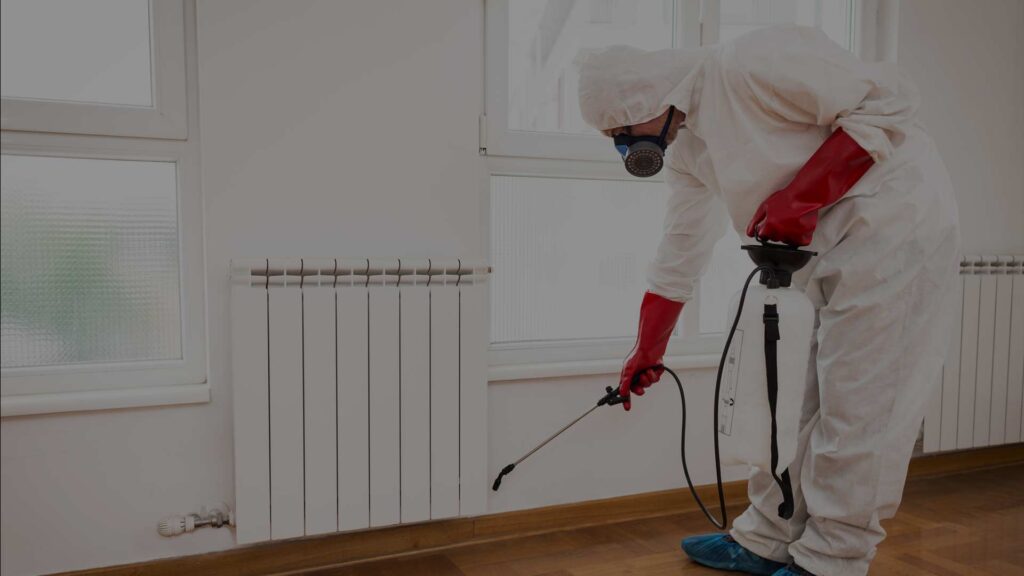When it comes to battling bothersome pests, professional exterminators are the frontline warriors. Armed with a host of tools and solutions, they help to safeguard our homes and businesses from unwanted intruders. But have you ever wondered, what spray do exterminators use? In this article, we aim to pull back the curtain on the professional pest control industry and shine a light on the key ingredient in an exterminator’s arsenal: the spray. We’ll delve into the types of sprays used, the active ingredients, their effectiveness, and any potential environmental or health concerns.
- Safety – How safe are these sprays for humans, pets, and the broader ecosystem?
- Effectiveness – Do these sprays work across a broad spectrum of pests, or are they more specialized?
- Environmental Impact – What are the long-term effects of these sprays on our environment?

The Exterminators’ Arsenal: Types of Sprays and Their Targets
Professional exterminators have a wide range of tools at their disposal, with pest control sprays being one of the most commonly used. These sprays, each designed to target specific types of pests or meet specific requirements, form an essential part of the exterminator’s arsenal.
- The Exterminators’ Arsenal: Types of Sprays and Their Targets
- The Chemical Behind the Kill: Understanding Active Ingredients
- From Nature to the Can: Environmentally Friendly Alternatives
- The Professional Touch: Licensing, Application Process, and Safety Measures
- Safety Measures Used by Exterminators
- Homeowners’ Role: Before, During, and After Extermination
- DIY vs Professional: A Comparative Analysis
- Special Considerations in Pest Control
- The Bigger Picture: Long-term Impacts and Misconceptions
- Conclusion
Sprays Typically Used by Professional Exterminators
Exterminators usually carry an array of sprays, tailored to target various types of pests.
- Demon WP – This is a general-purpose insecticide that exterminators commonly use. It is effective against a wide range of pests, including ants, cockroaches, spiders, and certain types of beetles.
- Termidor SC – This is a popular termiticide that professionals use to eradicate termites. It’s known for its “Transfer Effect,” where termites transfer the poison to other members in their colony, ensuring thorough elimination.
- Talstar P – Often used for outdoor and perimeter treatments, Talstar P is effective against over 75 different pests, including ants, mosquitoes, spiders, and ticks.
- Bedlam Plus – As the name suggests, this spray is specifically designed to deal with bed bugs. It’s formulated to kill not only adult bed bugs but also their eggs, offering a comprehensive solution to bed bug infestations.
Effectiveness Against a Wide Range of Pests or Specific Types
While some sprays, like Demon WP and Talstar P, are formulated to be effective against a broad range of pests, others, like Termidor SC and Bedlam Plus, are designed to target specific pests. The choice of spray depends on the type of infestation. General-purpose sprays are typically used as a preventative measure or when dealing with a variety of pests, whereas specific sprays are used when a particular pest is identified.
Different Sprays for Indoor and Outdoor Pest Control
The choice between indoor and outdoor sprays often depends on the nature of the infestation and the specific pest being targeted. For instance, Talstar P is a popular choice for outdoor and perimeter treatments, given its wide-ranging effectiveness against outdoor pests and its resilience to environmental conditions.
On the other hand, sprays like Bedlam Plus are intended for indoor use, particularly for treating bed bugs in bedrooms and other indoor areas. These sprays are designed to be safe for indoor use and target pests that are more likely to infest indoor spaces.
When using any of these sprays, it’s essential to follow the manufacturer’s instructions for use and safety precautions. Always remember that, while these sprays are available for purchase, dealing with a pest infestation is best left to a professional exterminator to ensure safe and effective treatment.
The Chemical Behind the Kill: Understanding Active Ingredients
Pest control sprays utilized by professional exterminators are made effective through their active ingredients. These chemicals are specially designed to target and eliminate various pests. However, understanding what these active ingredients are, how they work, and the potential risks associated with them is crucial.
Main Active Ingredients in Pest Control Sprays
There are numerous active ingredients used in pest control sprays. Here are a few common ones found in the aforementioned products:
- Cypermethrin – This is the active ingredient in Demon WP. It belongs to a class of pesticides known as pyrethroids, which are synthetic versions of naturally occurring pesticides called pyrethrins.
- Fipronil – Found in Termidor SC, fipronil is a broad-use insecticide that belongs to the phenylpyrazole chemical family. It’s known for its delayed action, making it highly effective against social insects like termites.
- Bifenthrin – This is the active ingredient in Talstar P. Bifenthrin is another synthetic pyrethroid, known for its effectiveness against a wide range of pests.
- Phenothrin and Pyrethrins – These are the active ingredients in Bedlam Plus. Phenothrin is a synthetic pyrethroid, while pyrethrins are natural insecticides derived from chrysanthemum flowers.
How Active Ingredients Eliminate Pests
Each of these active ingredients works differently to eliminate pests.
- Cypermethrin – It affects the nervous system of insects by preventing their nerves from returning to a resting state after they have been stimulated. This rapid firing of nerves leads to paralysis and ultimately death.
- Fipronil – This works by blocking the GABA-gated chloride channels in the nervous system of insects. This disruption causes hyperexcitation of the nervous system, leading to the insect’s death. Its slow action allows the poisoned insect to come into contact with others, spreading the poison throughout the colony.
- Bifenthrin – Like other pyrethroids, bifenthrin targets the nervous system of insects, causing paralysis and eventual death.
- Phenothrin and Pyrethrins – These ingredients target the nervous systems of insects, leading to paralysis and death. Pyrethrins are particularly effective against bed bugs due to their knockdown effect.
Potential Risks Associated with Active Ingredients
While these active ingredients are highly effective against pests, they can also pose potential risks to humans and pets if improperly used.
- Cypermethrin and Bifenthrin – These pyrethroids can cause skin and eye irritation in humans. In some cases, they might lead to allergic reactions. Although generally considered safe for pets when dry, they can be toxic if ingested or if pets come into direct contact with the wet spray.
- Fipronil – This chemical can cause skin irritation and is harmful if swallowed. It’s also known to be toxic to birds, fish, and bees, so caution is required when using it outdoors.
- Phenothrin and Pyrethrins – These chemicals can cause allergic reactions, including skin and eye irritation, in sensitive individuals. Cats are particularly sensitive to pyrethroids and can suffer serious health effects if exposed.
In general, these chemicals should be used with caution, particularly around children and pets. Always ensure to follow the manufacturer’s safety guidelines when using any pest control product, or better yet, leave it to a professional exterminator to ensure safe and effective use.
From Nature to the Can: Environmentally Friendly Alternatives
In response to the growing demand for greener, more sustainable pest control solutions, many companies have developed environmentally friendly or natural alternatives to traditional pest control sprays. These products aim to provide effective pest control while minimizing harm to the environment and non-target organisms.
Environmentally Friendly or Natural Alternatives to Chemical Sprays
Several companies have developed eco-friendly pest control products that use natural ingredients or utilize environmentally friendly manufacturing processes.
- EcoSMART Organic Insect Killer – This product uses a blend of plant oils, such as Rosemary Oil and Peppermint Oil, as its active ingredients. These oils work by targeting the nervous system receptors active only in insects, not humans or pets.
- Wondercide Indoor Pest Control Spray – This product also uses natural ingredients, primarily Cedar Oil, to repel and kill a variety of indoor pests. Cedar Oil works by dehydrating and suffocating insects, effectively eliminating them.
- Orange Guard Home Pest Control – This spray uses D-Limonene, an oil extracted from citrus rind, as its active ingredient. D-Limonene works by dissolving the waxy coating on the exoskeleton of insects, causing dehydration and asphyxiation.
Effectiveness and Potential Benefits for the Environment
Environmentally friendly pest control products like those mentioned above offer several benefits.
- Effectiveness – While these natural sprays may not have the residual effect of synthetic chemicals, they can be highly effective when applied correctly. They work best when used as part of an integrated pest management approach, which includes prevention and regular monitoring.
- Safety for Non-Target Organisms – Unlike synthetic pesticides, which can harm non-target organisms like birds, bees, and fish, natural alternatives tend to be much safer. This can help to maintain biodiversity and protect vulnerable species.
- Reduced Chemical Residues – Natural sprays often leave fewer and less harmful residues in the environment. This means less risk of soil and water contamination and reduced harm to the surrounding ecosystem.
- Less Risk to Humans and Pets – Natural sprays are typically safer for use around children and pets. However, as with any product, they should be used according to the manufacturer’s instructions, and caution should be exercised around individuals with allergies or sensitivities.
While these eco-friendly alternatives are a step in the right direction, it’s essential to remember that even “natural” or “green” products can have impacts on the environment and should be used responsibly. Always consult with a pest control professional to find the most effective and sustainable solution for your pest problem.
The Professional Touch: Licensing, Application Process, and Safety Measures
The application of pest control sprays, especially those that contain potent chemicals, requires not just skill and knowledge, but also proper licensing and adherence to safety measures. Let’s delve into these aspects.
Licensing and Certification for Exterminators
In most jurisdictions, professional exterminators are required to hold a valid license or certification to handle and apply pest control sprays. This process often includes extensive training and examination to ensure that the exterminator understands the risks associated with these chemicals and knows how to apply them safely and effectively. For instance, in the United States, the Environmental Protection Agency (EPA) governs the certification of pest control applicators.
Exterminator’s Process When Using Sprays to Eliminate Pests
The process followed by exterminators often begins with an assessment of the infestation. They identify the type of pest, the severity of the infestation, and the best method for treatment. If spraying is deemed necessary, exterminators will then select the appropriate product based on the pest type and the infested area.
Before spraying, they usually prepare the area, which might involve removing pets and clearing the area of food items or sensitive materials. During application, exterminators often wear protective equipment and use specialized tools to apply the spray accurately and effectively. They’ll then provide guidelines to the homeowner about when it’s safe to reenter the area.
Safety Measures Used by Exterminators
Exterminators are trained to take numerous safety measures when applying sprays, especially in residential areas. These may include wearing personal protective equipment, such as gloves and respirators, to protect against chemical exposure.
They also ensure that non-target organisms and individuals are not present during the application, to prevent unnecessary exposure. After application, exterminators typically ventilate the area to allow any fumes to dissipate. They also advise homeowners about any necessary precautions they should take post-application, such as keeping pets away from treated areas until the product has dried.
Regulations Governing the Use of Sprays by Exterminators
The use of pest control sprays by exterminators is governed by several regulations to ensure the safety of the public and the environment. In the US, for example, the EPA regulates the sale and use of pesticides under the Federal Insecticide, Fungicide, and Rodenticide Act (FIFRA). This legislation requires all pesticides to be registered with the EPA and used in accordance with their labeling.
State laws may also apply and could include additional training and licensing requirements for exterminators, as well as restrictions on the use of certain products in sensitive areas, such as schools or bodies of water.
Adherence to these regulations, combined with proper training and safety measures, ensures that exterminators can effectively combat pest infestations while minimizing risks to people and the environment. As a homeowner, it’s essential to ensure that your pest control service provider follows these guidelines to provide a safe and effective service.
Homeowners’ Role: Before, During, and After Extermination
Professional extermination treatments involving sprays can effectively rid your home of pests, but as a homeowner, your role in the process is crucial. Here’s what you can do before, during, and after a pest control visit to ensure maximum efficacy.
Precautions for Homeowners Before and After Professional Extermination
Before a professional extermination treatment, it’s important to prepare your home.
- Clear Clutter – Remove any unnecessary items or clutter from the areas to be treated to give the exterminator unobstructed access.
- Cover and Store – Cover and store any open food items, children’s toys, pet food and water bowls, and other sensitive items.
- Seal Food – Ensure that all food items, especially in the kitchen, are sealed properly or moved away from the treatment area.
- Protect Sensitive Items – Consider removing or covering items that could potentially be damaged by the chemicals, such as electronics or fine art.
After the treatment:
- Ventilation – Ventilate the treated areas well, especially if the exterminator advises it. Open windows and turn on fans to help disperse any residual chemical odors.
- Avoid Cleaning Immediately – Don’t clean the treated areas immediately. Products like Termidor SC or Talstar P have residual effects that continue to kill pests for weeks or even months after application.
- Monitor for Pests – Keep an eye out for any signs of pests. If you continue to see pests a week or so after treatment, contact your pest control provider.
- Follow Exterminator’s Advice – Your exterminator will provide specific guidelines based on the treatment given, so be sure to follow these instructions carefully.
Scheduling Professional Extermination Treatments
The frequency of professional extermination treatments can vary greatly depending on the specific pest problem, the severity of the infestation, and the treatment used. As a general guideline, most homeowners find that treatment once a quarter, or even bi-annually, is sufficient to maintain a pest-free environment.
However, in cases of severe infestations or for pests that reproduce rapidly (like roaches or bed bugs), more frequent treatments may be needed. EcoSMART Organic Insect Killer, for instance, has a fast knockdown but no residual effect, so it may require more frequent applications.
Always consult with a pest control professional to determine the most effective treatment schedule for your specific situation. Remember, the goal of professional pest control is not just to kill visible pests, but to target the entire population, including eggs and larvae, to prevent future infestations.
DIY vs Professional: A Comparative Analysis
Pest control is a vital aspect of maintaining a comfortable and hygienic living environment. But when pests appear, should you reach for a do-it-yourself solution or call in the professionals? Let’s explore this in detail.
DIY Sprays for Household Pest Control
There is a plethora of over-the-counter DIY sprays available that can be used to control common household pests. These products are typically easy to use and readily available at local home improvement stores or online.
Here are a few well-known examples:
- Raid Ant & Roach Killer – This product is designed to kill a range of common pests on contact, including ants, roaches, and over 20 other types of insects.
- Hot Shot Bedbug & Flea Fogger – This fogger can be used to treat larger areas or entire rooms for bedbugs and fleas.
- Ortho Home Defense Max Indoor Insect Barrier – This is a general-purpose insecticide that can be used to create a barrier against a wide range of common household pests.
Comparing Professional Extermination Sprays and Over-The-Counter Products
While DIY sprays can be an effective solution for minor pest problems or as a preventive measure, they may not be sufficient for larger infestations or certain types of pests.
- Effectiveness – Professional extermination sprays such as Termidor SC for termites or Talstar P for a range of pests often contain more potent active ingredients and may have a residual effect that continues to kill pests for weeks or months after application. This makes them more effective, especially for severe infestations.
- Safety – Both DIY and professional extermination sprays come with safety risks, particularly if not used correctly. Professional exterminators are trained to handle these chemicals safely and to apply them in a way that minimizes risks to household occupants and pets. DIY sprays also contain safety instructions that should be strictly followed.
- Cost – DIY sprays are typically less expensive upfront than hiring a professional exterminator. However, in the case of severe infestations, failing to eliminate the problem entirely can lead to ongoing costs and potential property damage, making the professional option more cost-effective in the long run.
- Convenience – Using a DIY spray can be done at your convenience while hiring a professional requires scheduling an appointment. However, a professional exterminator will typically conduct a thorough inspection, use a targeted treatment plan, and provide follow-up services, which can save homeowners time and effort.
Special Considerations in Pest Control
Pest control, particularly when sprays are used, involves a myriad of considerations to ensure effectiveness and safety. Here, we’ll discuss potential residue left by sprays and special considerations for using pest control in food preparation areas or restaurants.
Residue or Stains Left by Pest Control Sprays
Pest control sprays can sometimes leave a residue on surfaces where they’re applied. This is often by design, as many pesticides are meant to continue killing pests for a period after application. However, this residue is typically invisible and should not stain most surfaces.
Nevertheless, it’s important to be aware of the potential for residue, particularly on porous surfaces or light-colored fabrics, as some products may cause discoloration. It’s always a good idea to test a small, inconspicuous area first if you’re concerned about potential staining.
When it comes to residue safety, especially around children and pets, be sure to follow the product’s instructions carefully. Many products recommend keeping children and pets away from treated areas until the spray has dried completely. If you’re concerned about residue, there are also several products available, like EcoSMART Organic Insect Killer, which are designed to be safe for use around kids and pets once dry.
Pest Control in Food Preparation Areas or Restaurants
Using pest control sprays in food preparation areas or restaurants requires special consideration due to the risk of contaminating food or cooking utensils.
All food and food preparation equipment should be properly stored or covered before applying the pesticide. The preparation and serving areas should be completely clear. This helps ensure that no food or equipment comes into direct contact with the pesticide.
Choose a product that is labeled for use in food handling areas. These products are designed to be safe for use in kitchens and restaurants when used as directed. An example is Advion Cockroach Gel Bait, which is specifically designed for use in commercial kitchens.
After applying the pesticide, ensure that the area is adequately ventilated and cleaned before food preparation resumes.
It’s also essential to remember that pest control in restaurants should not be a standalone measure. Instead, it should be part of an integrated pest management plan that includes proper food storage, regular cleaning, and exclusion techniques to prevent pests from entering the premises.
The Bigger Picture: Long-term Impacts and Misconceptions
As with any widespread practice, pest control, particularly the use of sprays by exterminators, generates debate and concerns. Here, we’ll delve into the long-term environmental impacts of these sprays and address some common misconceptions.
Long-term Effects of Pest Control Sprays on the Environment
The potential long-term effects of pest control sprays on the environment can be a significant concern. Traditional synthetic pesticides can accumulate in the environment over time, leading to potential issues such as groundwater contamination, harm to non-target organisms, and the development of pest resistance.
However, the pest control industry has made significant strides in developing more environmentally friendly options. For instance, products like EcoSMART Organic Insect Killer use plant oils rather than synthetic chemicals as their active ingredients. These natural pesticides break down more quickly in the environment, reducing their potential long-term impact.
Still, even eco-friendly options should be used responsibly to minimize any potential harm. That includes using them only as needed and following the recommended application methods and amounts.
Misconceptions About Pest Control Sprays
A common misconception about pest control sprays is that they’re always harmful to humans and pets. While it’s true that some pesticides can pose risks if improperly handled or applied, many products used today are designed to be safe for humans and pets once dry. Proper application and adherence to product instructions are vital in ensuring safety.
Another myth is that more pesticide is always better. However, using more pesticides than recommended can be not only unnecessary but also potentially harmful. Most pests can be effectively controlled with the correct, often minimal, amount of pesticide.
A third misconception is that all pests can be completely eradicated with pesticides. In reality, pest control is more about management than eradication. Pesticides are one tool in an integrated pest management strategy that also includes practices like habitat modification, biological controls, and regular monitoring.
Conclusion
Pest control is a complex field, with many considerations to take into account. From preparing your home for a pest control visit to understanding the chemicals used in the sprays, knowledge is key. Whether it’s the common household pests or more stubborn infestations, professional exterminators and over-the-counter products both play crucial roles in maintaining a comfortable, pest-free living environment.
One must always remember that safety comes first, whether it’s protecting sensitive individuals, understanding the potential impacts on the environment, or ensuring food preparation areas are safe. Moreover, it’s essential to recognize that pest control is not a one-time solution but an ongoing process that may require different approaches and continuous effort.
Finally, the importance of understanding and responsible use of pest control sprays cannot be overstated. As a homeowner, you play an integral role in the process of pest control. With the right preparation and precautions, you can effectively combat pests and ensure a safe and healthy environment for you and your family.




